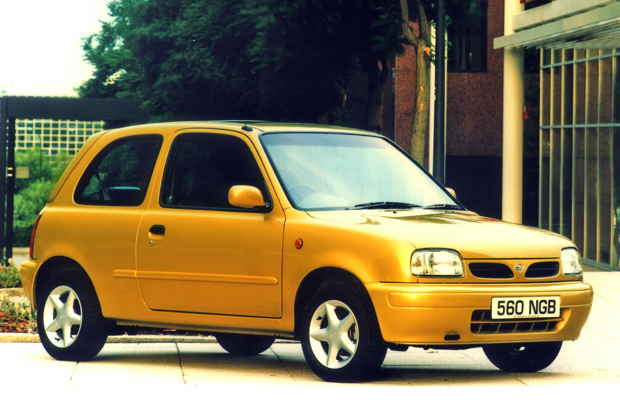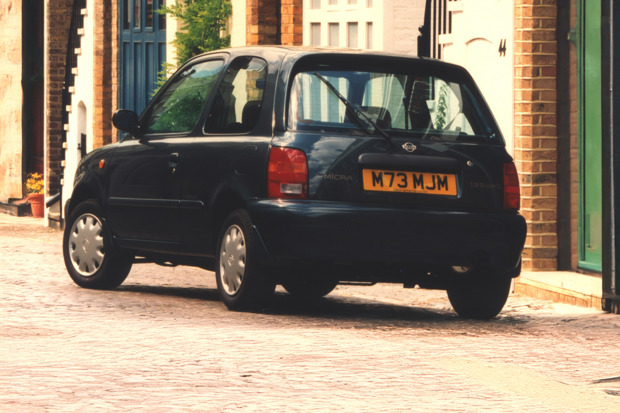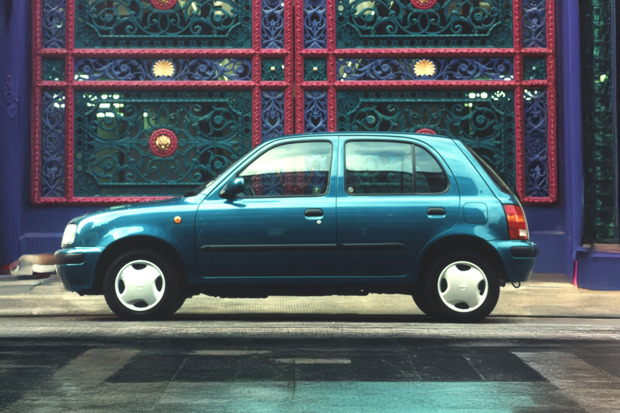A future classic? Nissan Micra K11

The first Nissan Micra was a good car, make no mistake, but while it excelled in the reliability stakes, it suffered from two traits common to Japanese cars of the era.
First, it wasn’t great when it came to corrosion. And second, it was slightly devoid of character. The latter was a key focus for Nissan when it launched the car’s replacement.
Not only was the new Nissan Micra – or Nissan March as it was known outside of the continent – going to be targeted at the European market, where the company saw huge growth potential. But it was also going to be built here, in the Nissan factory at Washington, Tyne and Wear, alongside the recently introduced Nissan Primera.
In styling terms, Nissan had consulted European buyers about what they didn’t like about the previous Nissan Micra K10, with the model’s boxy styling coming out as the primary reason it was unloved.
The new car, then, didn’t have a straight line in sight – it was round and ‘cuddly’, a theme enhanced by the launch advertising, which featured the Nissan Micra as a cartoon bubble, with a character all of its own.
Adding to that character were a range of zingy new 16-valve chain-driven overhead cam engines, in 1.0-, 1.3- and 1.4-litre capacities, all of which were free-revving and lively units with impressive performance for their size.
With Europe-friendly styling and a great range of engines, the Nissan Micra was an instant hit – enough to earn it the accolade of European Car of the Year in 1993.
It was the first Japanese-designed (albeit British-built) car to win the coveted award, beating competition from the likes of the Fiat Cinquecento and Renault Safrane. Well, the Fiat at least.
It was a right old chuckle to drive, too. Even in its most basic 1.0-litre form and with no power steering, the Nissan Micra was an eager and rev-hungry companion, with a surprisingly agile chassis that was understeer heavy but easy to control.
The 1.3, especially in almost posh SLX trim, was plenty capable of mixing it with motorway traffic, too, and could hold its own at speeds in excess of 80mph.

Nissan’s UK dealers couldn’t get enough. The Nissan Micra was its best-selling model ever and a fixture of suburban driveways across the UK for many years, not least because the it's production run was just under a decade.
That’s a long time in car model cycles, though it did receive a significant facelift at the end of 1997. It was given larger headlights, a more civilised dashboard and standard airbags and power steering, although arguably the latter wasn’t really needed, as without it the steering is still light and direct.
The facelift also provided a clue as to the car’s Achilles’ heel, with the sudden appearance of a strip of thick grey stone-chip paint along the sills on both sides – in retrospect, a move that suggests that Nissan’s engineers were fully aware of the original Micra's weak point.
Indeed, by the mid-2000s, it was rare to see a pre-facelift Nissan Micra without a patch of welded metal in front of the rear wheelarch, whereas today it’s rare to see any – even the ‘protected’ ones – not wearing the model’s traditional plate of honour in recognition of a dutifully served life.
Mechanically, though, they’re unbreakable and that fact alone puts the Nissan Micra on the danger list. The chain-driven cam means no nasty belts snapping and ruining the top end. Apart from the occasionally distributor grumble, the 16v engines are flawlessly reliable, right up to substantial mileages.
It’s little surprise, then, to see the Nissan Micra K11 as the car of choice for a huge number of the UK’s takeaway food joints. A contribution that gives the Nissan Micra its very own place in British folklore, but also condemns the vast majority to a life of working hard right up until the moment they die, like the Victorian pauper of the car industry.
What that means, though, is that very few will survive, despite a cockroach-like resilience to being stamped out. With the average age at which a car in the UK is scrapped at 13.9 years, and the youngest Nissan Micra coming up to 23, it’s astonishing that there are still over 20,000 of them left on the roads in the UK.
But of those, a significantly vast majority are just one or two MoT tests away from death. Find a good one now and preserve it, for their time will surely come…


